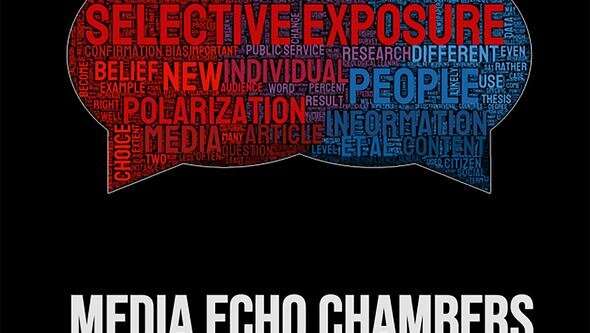Few indications that the new media landscape leads to increasing polarization in society

Increasing political polarization is often attributed to the internet and the dramatic increase in access to sources of information—also known as the new media landscape.
Media researcher Peter M. Dahlgren, however, has not seen any sign of this in Sweden. On the contrary, his new thesis shows that the problem is considerably smaller than many fear.
When he began his doctoral project, Dahlgren was under the impression that we are becoming increasingly isolated in so-called filter bubbles. He also feared that we are now living in a more polarized society, where more and more people hold extreme views, as we increasingly only obtain our information from news outlets and social media that serve to confirm and strengthen our already-held political opinions.
"But I have been forced to completely re-evaluate my position, because this really doesn't appear to be the case," he states several years later, with a copy of his finished thesis "Media Echo Chambers" on the desk before him.
Limited knowledge of polarization
His research constitutes an important addition to the otherwise limited scientific knowledge concerning the significance of Sweden's media development for a feared political polarization. Above all, it shows that the new media landscape has meant that we receive considerably more information from different directions and from more sources than before. Those who use niche news websites on the internet, for example, also tend to use traditional news media.
However, Peter M. Dahlgren has not been able to find many signs that the breadth of choice in itself should lead to increased polarization.
"What is actually noticeable is that those who are politically interested and inquisitive obtain their news from both left and right-wing media, and do not necessarily avoid information that is inconsistent with their own attitudes and beliefs. Neither is there much to suggest that their political convictions are influenced by the media content."
Other mechanisms in addition to the media
He draws the conclusion that polarization in society is a result of other mechanisms, rather than individuals in the new media landscape having greater opportunities to search for and select their sources of information.
"It could, for example, depend on how we interpret the content, rather than how we actually receive the information to begin with. But confirming this would require more research."
Three different parts
Dahlgren's research comprises three different investigations:
- A review of the results from national SOM surveys from 1986 onwards, which were begun by Professor Lennart Weibull 35 years ago—the most comprehensive study of the use of public service news by those on both the political left and right in Sweden, with a total of 103,589 participants.
- A panel study of how Swedes choose their news media on the basis of their political beliefs, where 2,254 participants completed three questionnaires over the course of two years.
- An experiment concerning whether polarization can arise due to exposure to content that conflicts with an individual's own beliefs, with 2,514 participants.
More information: gupea.ub.gu.se/handle/2077/67023
Provided by University of Gothenburg




















